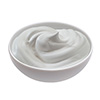Sign In Chef

By using our free meal planner (and the rest of spoonacular.com) you have to agree that you and only you are responsible for anything that happens to you because of something you have read on this site or have bought/cooked/eaten because of this site. After all, the only person who controls what you put in your mouth is you, right?
Spoonacular is a recipe search engine that sources recipes from across the web. We do our best to find recipes suitable for many diets — whether vegetarian, vegan, gluten free, dairy free, etc. — but we cannot guarantee that a recipe's ingredients are safe for your diet. Always read ingredient lists from the original source (follow the link from the "Instructions" field) in case an ingredient has been incorrectly extracted from the original source or has been labeled incorrectly in any way. Moreover, it is important that you always read the labels on every product you buy to see if the product could cause an allergic reaction or if it conflicts with your personal or religious beliefs. If you are still not sure after reading the label, contact the manufacturer.
We also attempt to estimate the cost and calculate the nutritional information for the recipes found on our site. Again, we cannot guarantee the accuracy of this information. Additionally, our nutrition visualizer that suggests that you limit sodium, sugar, etc., and get enough protein, vitamins, and minerals is not intended as medical advice. Similarly, our health tips are based on articles we have read from various sources across the web, and are not based on any medical training. The team behind spoonacular does not possess any medical qualifications and the information may be found to be incorrect or out of date based on future research. If you need help planning your diet or determining which foods (and recipes) are safe for you, contact a registered dietitian, allergist, or another medical professional.
Spoonacular is not responsible for any adverse effects or damages that occur because of your use of the website or any information it provides (e.g. after cooking/consuming a recipe on spoonacular.com or on any of the sites we link to, after reading information from articles or shared via social media, etc.)
×$3.19 per serving

1 likes

Ready in 45 minutes

Spoonacular Score: 76%
Slow Cooker Chicken Verde Enchilada might be just the Mexican recipe you are searching for. This recipe makes 8 servings with 848 calories, 44g of protein, and 54g of fat each. For $3.19 per serving, this recipe covers 35% of your daily requirements of vitamins and minerals. It works well as a main course. Head to the store and pick up garlic, chicken, tsp chili powder, and a few other things to make it today. 1 person were impressed by this recipe. It is brought to you by Foodista. From preparation to the plate, this recipe takes roughly 45 minutes. Overall, this recipe earns a good spoonacular score of 73%. Try Slow Cooker Salsa Verde Chicken, Slow Cooker Chicken Chile Verde, and Slow Cooker Chicken Chile Verde for similar recipes.
Mexican works really well with Pinot Noir, Riesling, and Sparkling rosé. Acidic white wines like riesling or low-tannin reds like pinot noir can work well with Mexican dishes. Sparkling rosé is a safe pairing too. The Goldeneye Gowan Creek Vineyard Pinot Noir with a 4.9 out of 5 star rating seems like a good match. It costs about 80 dollars per bottle.
 Made in the style preferred by our founder, Dan Duckhorn, this wine exudes richness, depth, dark fruit and structure. On the palate, it is deep and lush, with layers of wild blackberry and plum pie supported by a streak of acidity that adds definition to the flavors, while drawing the wine to a lingering finish with hints of lavender, pennyroyal, and Asian spices.
Made in the style preferred by our founder, Dan Duckhorn, this wine exudes richness, depth, dark fruit and structure. On the palate, it is deep and lush, with layers of wild blackberry and plum pie supported by a streak of acidity that adds definition to the flavors, while drawing the wine to a lingering finish with hints of lavender, pennyroyal, and Asian spices.
» Get this wine on Wine.com


























































Read the detailed instructions on Foodista.com – The Cooking Encyclopedia Everyone Can Edit